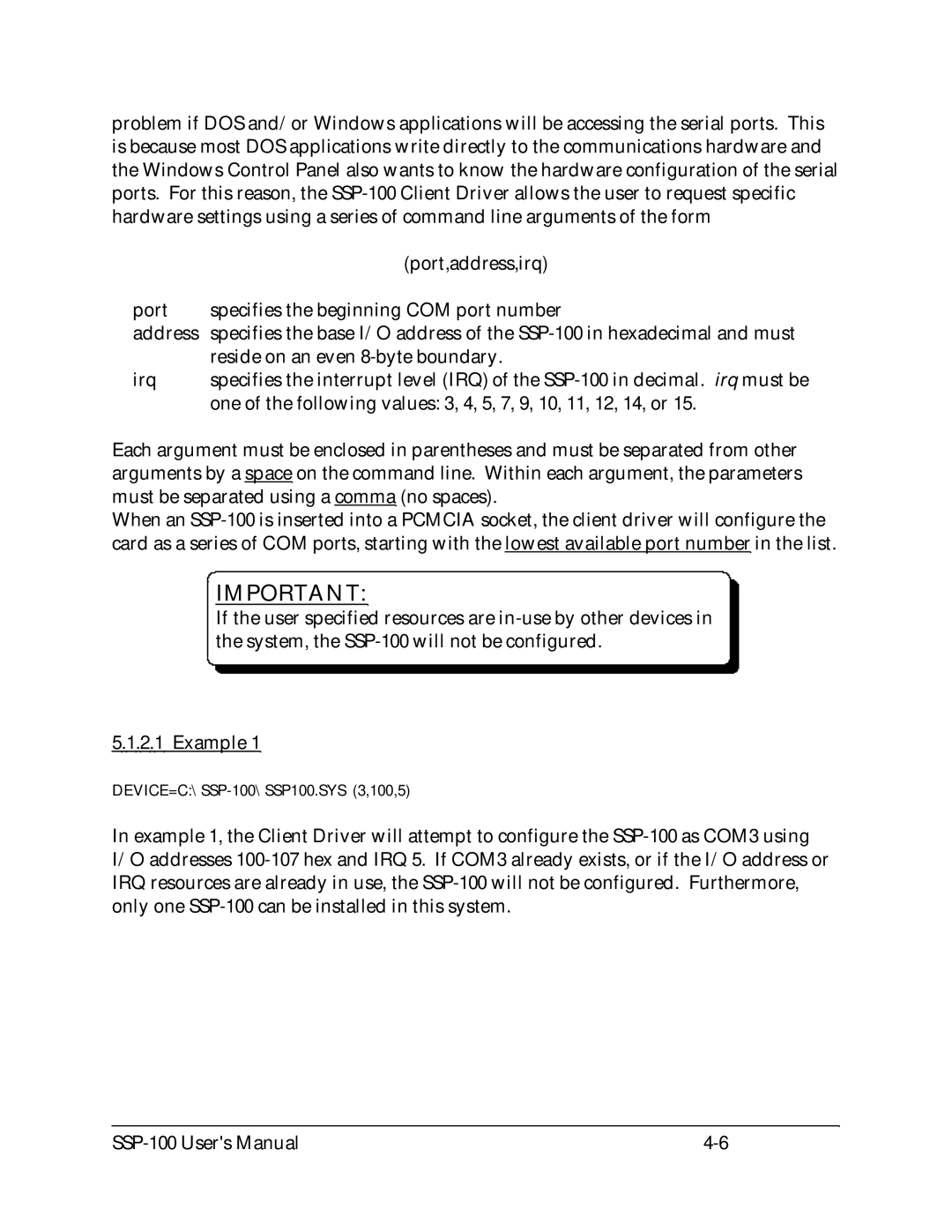
problem if DOS and/or Windows applications will be accessing the serial ports. This is because most DOS applications write directly to the communications hardware and the Windows Control Panel also wants to know the hardware configuration of the serial ports. For this reason, the
| (port,address,irq) |
port | specifies the beginning COM port number |
address | specifies the base I/O address of the |
| reside on an even |
irq | specifies the interrupt level (IRQ) of the |
| one of the following values: 3, 4, 5, 7, 9, 10, 11, 12, 14, or 15. |
Each argument must be enclosed in parentheses and must be separated from other arguments by a space on the command line. Within each argument, the parameters must be separated using a comma (no spaces).
When an
IMPORTANT:
If the user specified resources are
5.1.2.1 Example 1
DEVICE=C:\SSP-100\SSP100.SYS (3,100,5)
In example 1, the Client Driver will attempt to configure the
